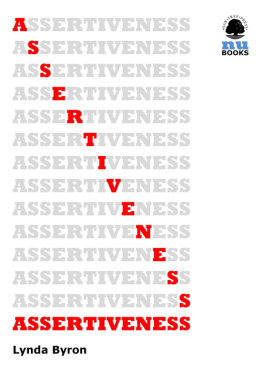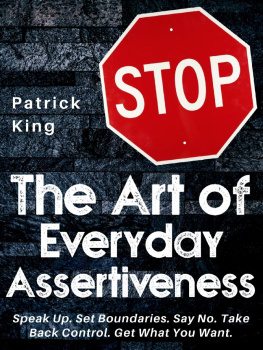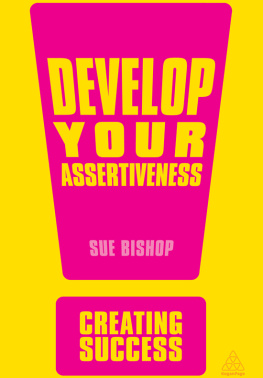John Adams - Assertiveness for Men: Stop Being a Pushover and Learn to Say No by Using These Proven Techniques
Here you can read online John Adams - Assertiveness for Men: Stop Being a Pushover and Learn to Say No by Using These Proven Techniques full text of the book (entire story) in english for free. Download pdf and epub, get meaning, cover and reviews about this ebook. year: 2019, publisher: John Adams, genre: Religion. Description of the work, (preface) as well as reviews are available. Best literature library LitArk.com created for fans of good reading and offers a wide selection of genres:
Romance novel
Science fiction
Adventure
Detective
Science
History
Home and family
Prose
Art
Politics
Computer
Non-fiction
Religion
Business
Children
Humor
Choose a favorite category and find really read worthwhile books. Enjoy immersion in the world of imagination, feel the emotions of the characters or learn something new for yourself, make an fascinating discovery.
- Book:Assertiveness for Men: Stop Being a Pushover and Learn to Say No by Using These Proven Techniques
- Author:
- Publisher:John Adams
- Genre:
- Year:2019
- Rating:3 / 5
- Favourites:Add to favourites
- Your mark:
Assertiveness for Men: Stop Being a Pushover and Learn to Say No by Using These Proven Techniques: summary, description and annotation
We offer to read an annotation, description, summary or preface (depends on what the author of the book "Assertiveness for Men: Stop Being a Pushover and Learn to Say No by Using These Proven Techniques" wrote himself). If you haven't found the necessary information about the book — write in the comments, we will try to find it.
Do you consider yourself a people pleaser or Mr. Nice Guy?
Are you sick being a doormat?
Do you have enough of hearing yourself saying Yes when wanted to say NO?
Then keep reading.
People around you consider you a very nice person. Your colleagues know they can ask you for help because they know you will get it done in time. But for important decisions, your colleagues go to someone else. They skip asking for your take on the situation. Sometimes in meetings, you wait for the right moment to give your opinion, after a while, you grab your chance but almost nobody pays attention. You realize that your behavior is not going to bring you far. You want to do something about it.
You have come to the right place.
Here is a tiny fraction of what you will discover in Assertiveness for Men:
Fair warning.
Being more assertive can have some side effects.
Just to name a few:
You might think that reading a book will not make you a more assertive person for life. Thats why its jam-packed with exercises. Its not solely a book to read, its a workbook. With the help of practical exercises and tools, you can make the desired lasting changes in your behavior.
Do you want to start living your life on your terms and conditions?
Start today by scrolling up and clicking the add to cart button.
John Adams: author's other books
Who wrote Assertiveness for Men: Stop Being a Pushover and Learn to Say No by Using These Proven Techniques? Find out the surname, the name of the author of the book and a list of all author's works by series.






















